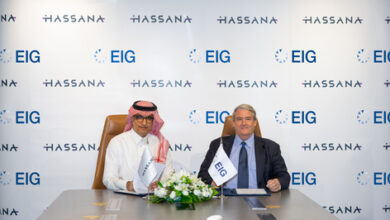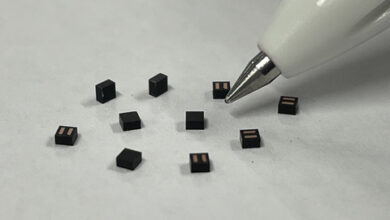IDFC FIRST Bank Q1 FY 25 PAT at Rs. 681 Crores, Core Operating Profit up 30.2% YOY
The Board of Directors of IDFC FIRST Bank, in its meeting held today, approved the unaudited financial results for the quarter ended June 30, 2024.
Deposits & Borrowings
Total Deposits of the Bank increased by 35.8% YOY from Rs. 1,54,427 crore as of June 30, 2023 to Rs. 2,09,666 crore as of June 30, 2024.
Customer Deposits increased by 37.8% YOY from Rs. 1,48,474 crore as of June 30, 2023 to Rs. 2,04,572 crore as of June 30, 2024.
CASA Deposits grew by 36.1% YOY from Rs. 71,765 crore as of June 30, 2023 to Rs. 97,692 crore as of June 30, 2024.
CASA Ratio stood at 46.6% as of June 30, 2024.
Retail Deposits grew by 43.5% YOY from Rs. 1,14,272 crore as of June 30, 2023 to Rs. 1,64,001 crore as of June 30, 2024.
Retail Deposits constitutes 80.2% of total customer deposits as of June 30, 2024.
Legacy High Cost Borrowings reduced from Rs. 16,055 crore as of June 30, 2023 to Rs. 10,084 crore as of June 30, 2024.
The Bank opened 11 new branches during Q1 FY25 to reach branch count of 955 by June 30, 2024.
Loans and Advances
Loans and Advances (including credit substitutes) increased by 22.0% YOY from Rs. 1,71,578 crore as of June 30, 2023 to Rs. 2,09,361 crore as of June 30, 2024.
The Bank continues to wind down infrastructure financing as per the stated strategy and now constitutes only 1.3% of total funded assets as of June 30, 2024.
Exposure to top 20 single borrowers improved from 7.0% as of June 30, 2023 to 5.4% as of June 30, 2024.
Credit to Deposit Ratio improved from 107.3% as of June 30, 2023 to 98.1% as of June 30, 2024.
Incremental Credit to Deposit ratio between June 30, 2023 to June 30, 2024 was 72.1%.
Assets Quality
Gross NPA of the bank has improved from 2.17% as of June 30, 2023 to 1.90% of June 30, 2024, improved by 27 bps on YOY basis.
Net NPA of the bank has improved from 0.70% as of June 30, 2023 to 0.59% of June 30, 2024, improved by 11 bps on YOY basis.
Gross NPA of the Retail, Rural and MSME Finance has improved from 1.53% as of June 30, 2023 to 1.46% as of June 30, 2024, improved by 7 bps on YOY basis.
Net NPA of the Retail, Rural and MSME Finance has improved from 0.52% as of June 30, 2023 to 0.46% as of June 30, 2024, improved by 6 bps on YOY basis.
Excluding the infrastructure financing book, which the Bank is running down, the GNPA and NNPA of the Bank would have been 1.60% and 0.43% respectively as of June 30, 2024.
SMA-1 and SMA-2 in Retail, Rural and MSME Finance portfolio continues to be low at 1.01%, but increased from 0.85% as of March 31, 2024 due to rise in SMAs of JLG book (due to floods) which increased from 1.26% as of March 31, 2024 to 1.70% as of June 30, 2024.
Provision coverage ratio (excluding technical write-off) of the bank has increased from 68.11% as of June 30, 2023 to 69.38% as of June 30, 2024. Excluding the run-down infrastructure book, PCR was at 73.48% at June 30, 24.
Profitability
Net Interest Income (NII) grew 25% YOY from Rs. 3,745 crore in Q1 FY24 to Rs. 4,695 crore in Q1 FY25.
Net Interest Margin (Gross of IBPC and sell-down) reduced from 6.33% in Q1 FY24 to 6.22% in Q1 FY25.
Fee and Other Income grew by 19% YOY from Rs. 1,341 crore in Q1 FY24 to Rs. 1,595 crore in Q1 FY25.
Core Operating income grew 24% from Rs. 5,086 crore in Q1 FY24 to Rs. 6,290 crore in Q1 FY25.
Operating Expense grew by 21% YOY from Rs. 3,659 crore in Q1 FY24 to Rs. 4,432 crore in Q1 FY25.
Core Operating Profit grew by 30% YOY from Rs. 1,427 crore in Q1 FY24 to Rs. 1,858 crore for Q1 FY25.
Provisions increased 109% YOY from Rs. 476 crore in Q1 FY24 to Rs. 994 crore in Q1 FY25. This was primarily due to rise in provisions of JLG portfolio, impacted by the flood in Tamil Nadu and seasonal impact.
The annualized credit cost as % of average funded assets (gross of IBPC) for Q1 FY25 was 1.90%. Without the impact of JLG book, the annualized credit cost as % of average funded assets for Q1-FY25 was 1.70%. Bank expects the credit cost to get normalized from Q3-FY25 onwards.
Net Profit de-grew 11% YOY from Rs. 765 crore in Q1 FY24 to Rs. 681 crore in Q1 FY25. Excluding trading gains from respective period, the degrowth in profit was at 7% YOY.
Provisions for JLG business was higher by Rs. 132 crores in Q1 FY 25 over the Q1 FY 24. Excepting this impact, the PAT for the quarter would have been higher by Rs. 100 crores.
RoA stood at 0.91% and RoE stood at 8.32% in Q1 FY25.
Capital Position
Capital Adequacy including profit for Q1-25 was strong at 15.88% with CET-1 Ratio at 13.34% as on June 30, 2024. Including Capital raised in July 2024, the Capital Adequacy Ratio as on June 30, 2024 would be 17.21%, with CET-1 ratio at 14.67%.
Comments from Managing Director & CEO Mr. V Vaidyanathan, Managing Director and CEO, IDFC FIRST Bank, said, “The biggest requirement in Banking today is the ability to raise deposits. On this front, we continue to get strong growth in deposits based on top quality service levels, top in class mobile App, and excellent corporate governance. Our CASA ratio is sustained at 46.6%. Our customer deposits have grown 38% YOY. We thank our customers for their goodwill towards us.
Overall Gross NPA was stable at 1.90% and Net NPA was 0.59%. Provisions normalized this quarter in line with the industry. We took extra provisions for MFI business because of massive floods in Tamil Nadu and because of seasonality. We expect credit cost to normalise in H2 FY25 as guided earlier.
On the profitability front, the Core Operating Profit (Income less Opex) rose 31% YOY excluding trading gains. This continues on the back of strong core Operating Profit in FY24, which was up 31% from Rs. 4,607 crore in FY23 to Rs. 6,030 crore in FY24.“
About IDFC FIRST Bank
IDFC FIRST Bank is a new age Universal Bank in India built on the foundations of Ethical Banking, Digital Banking, and Social Good Banking. We are building a world class bank in India.
As part of the Bank’s ethical banking approach, it applies a “Near and Dear” Test to its products, so that the employees of the Bank serve only such products theyd want for their own loved ones. It believes income earned unethically is not worth earning.
Therefore, the Bank avoids complicated descriptions, calculations, and legalese that customers don’t understand. It abolished all charges on Savings Accounts including for Debit Cards, IMPS, RTGS, NEFT, Cash Deposit, “Non-Home branch” access, Cash withdrawals at ATMs and at branches, 3rd party transaction charges at branches, SMS Alert, Cheque book, Demand Drafts, Pay-order, duplicate statement, and all such services that are usually charged in the market. It follows the principle that it won’t touch its customers’ bank account for one reason or other. It is the first and only bank in India till date to do so.
IDFC FIRST Bank is the first bank in India to offer monthly credit on savings accounts. The credit cards have no hidden charges. It offers Lifetime Free without minimum spend conditions, never-expiring rewards points, zero interest on cash withdrawal at ATMs, dynamic low APR and much more. Fees if any are transparent and described neatly in a manner a common person can understand. Every product offered by the bank is highly customer friendly, most often the best in the industry.
As part of technology led banking, the Bank has built a modern technology stack and has built an advanced mobile app with 250+ features such as Goal based investing, MF investment assistance, electric-speed payments, Account Aggregator, MF Aggregator, Personal Finance Manager, Auto categorisation of spends, single app for personal and business banking, UPI on Credit Cards, travel and shop, bill and recharges, deals and reward redemptions, which offer great convenience to the customers. For business customers the Bank offers on-the-go bulk payments, ability to pay income tax, GST, customs duty, and connected banking with ERP solutions.
As part of the Social Banking theme, the Bank’s business model is naturally geared to social banking. It has developed unique capabilities for financing bottom of pyramid customers with consistently high asset quality. The Bank has financed over 40 million customers including 0.3 million SMEs, 0.9 million livelihood (cattle loans), 16 million lifestyle improvement loans (for laptops, washing machine, etc.), 1 million sanitation loans (toilets, water fittings), 6.5 million mobility loans (2-wheelers and cars), and home financing (over 100,000 homes), and 15 million loans to 4.3 million women-entrepreneurs. It also offers other retail and rural loans such as Kisan Credit Cards, harvest financing, gold loans etc.
IDFC FIRST Bank is a Universal Bank, and offers end to end Corporate Banking, Trade Finance such as issuance of LCs & BGs, SBLC, Packing Credit, Pre-shipment and Post-shipment Finance, Treasury products including risk hedging solutions like Forwards, Swaps, Options, and other Forex Solutions, SME Banking, Wealth Management, NRI banking, Cash Management, Nostro & Vostro account operations, Escrow facilities, Correspondent Banking, Fastag, Toll-acquiring, Dealer Finance and Purchase/Sales Invoice discounting.
ESG Goals: The Bank is incorporating ESG in every aspect of working and has high ESG scores. The Bank believes that to get an opportunity to create a new age, ethical and world class Bank for India is a great privilege for its employees.
Cautionary Statement: “Statements made in this release may contain certain forward-looking statements based on various assumptions on the Bank’s present and future business strategies and the environment in which it operates. Actual results may differ substantially or materially from those expressed or implied due to risk and uncertainties. These risks and uncertainties include the effect of economic and political conditions in India and abroad, volatility in interest rates and in the securities market, new regulations and Government policies that may impact the Bank’s businesses as well as the ability to implement its strategies. The information contained herein is as of the date referenced and the Bank does not undertake any obligation to update these statements. The Bank has obtained all market data and other information from sources believed to be reliable or its internal estimates, although its accuracy or completeness cannot be guaranteed.”
![]() Disclaimer: This content is distributed by Newsvoir.
Disclaimer: This content is distributed by Newsvoir.


